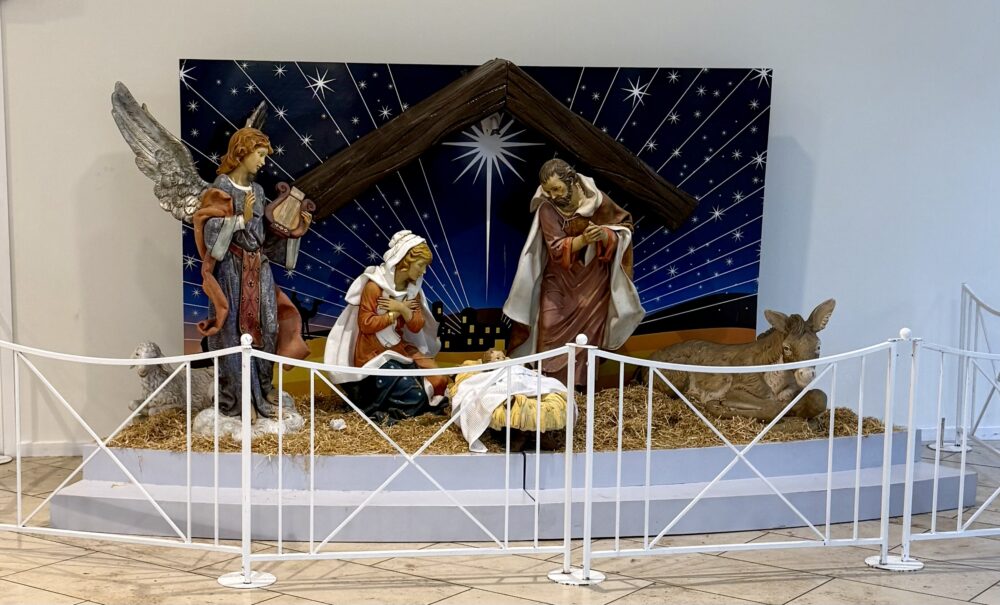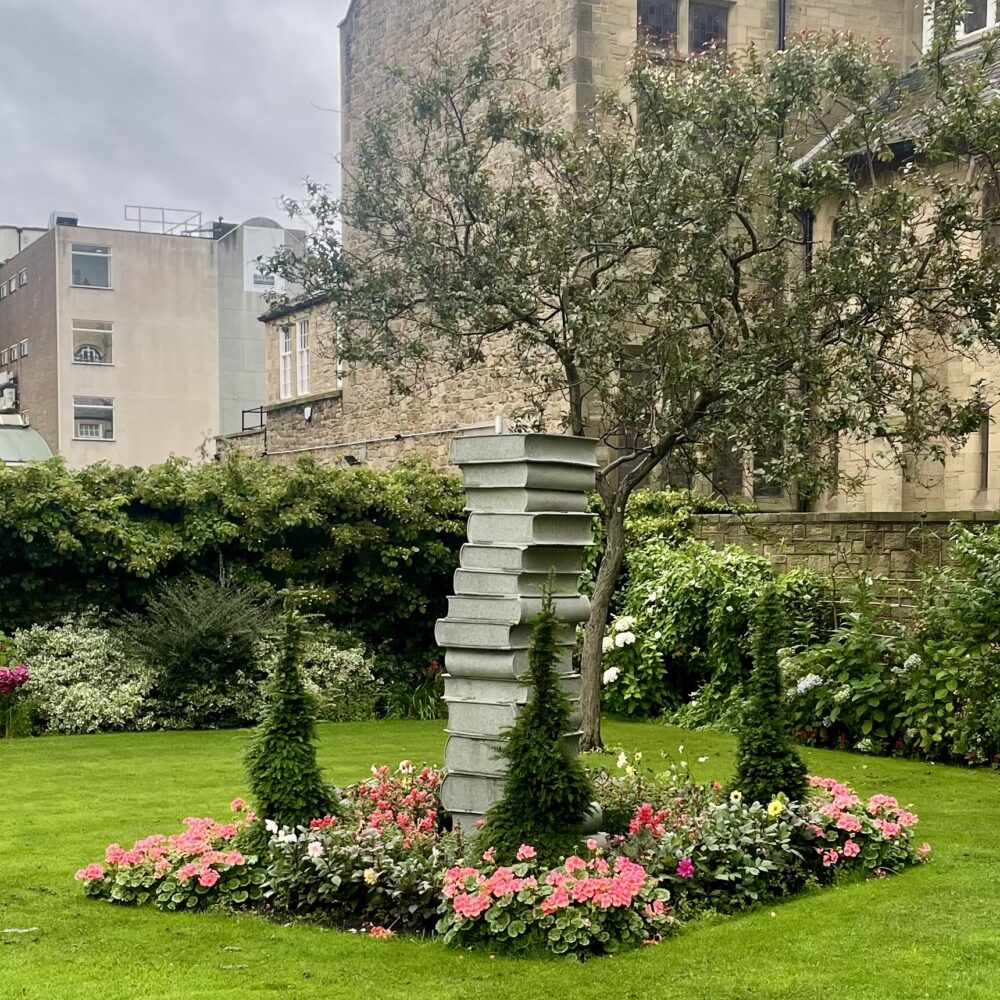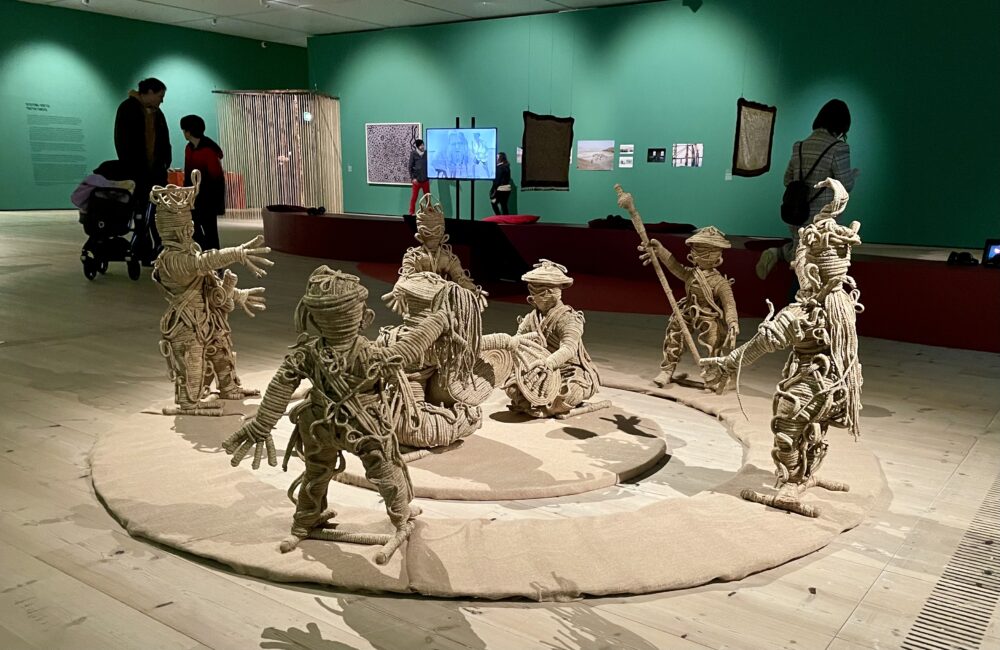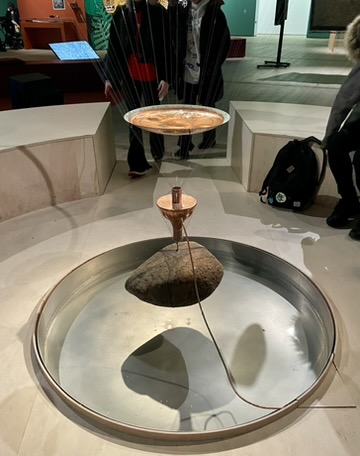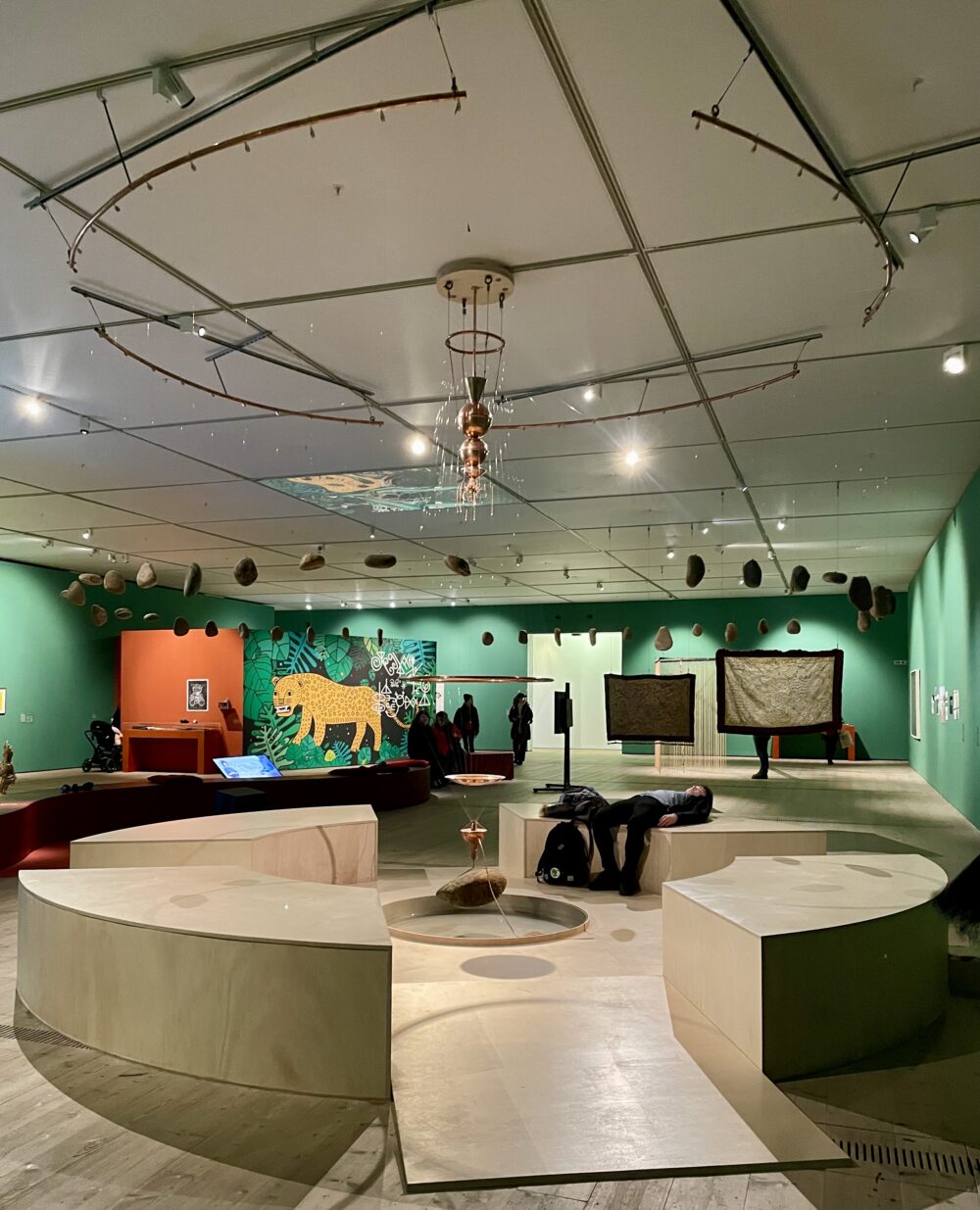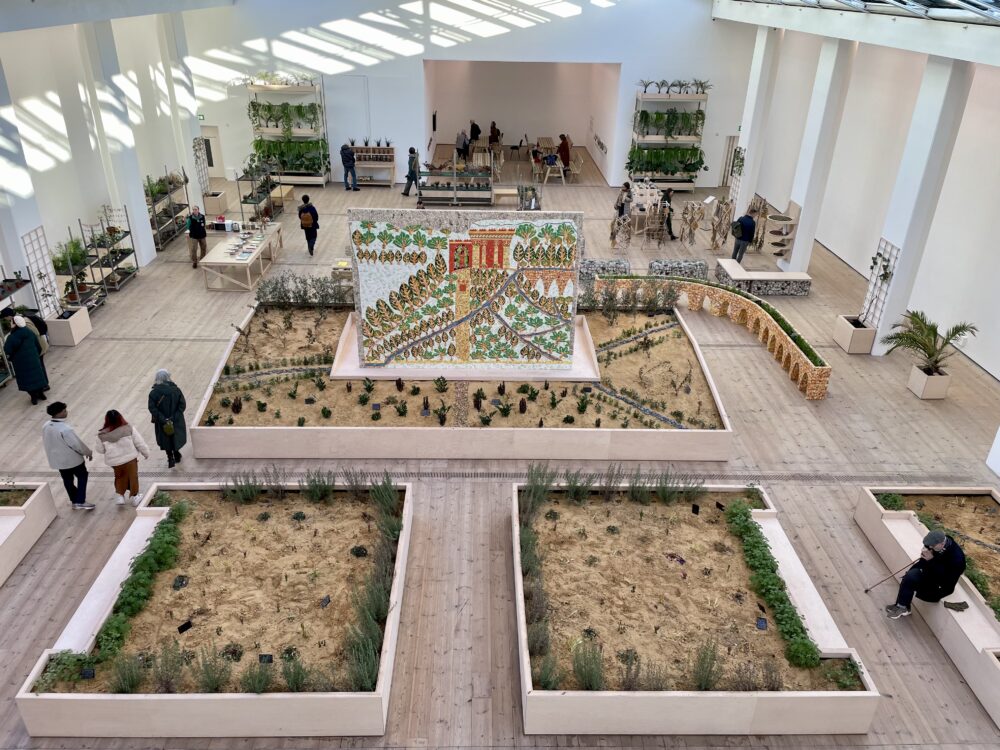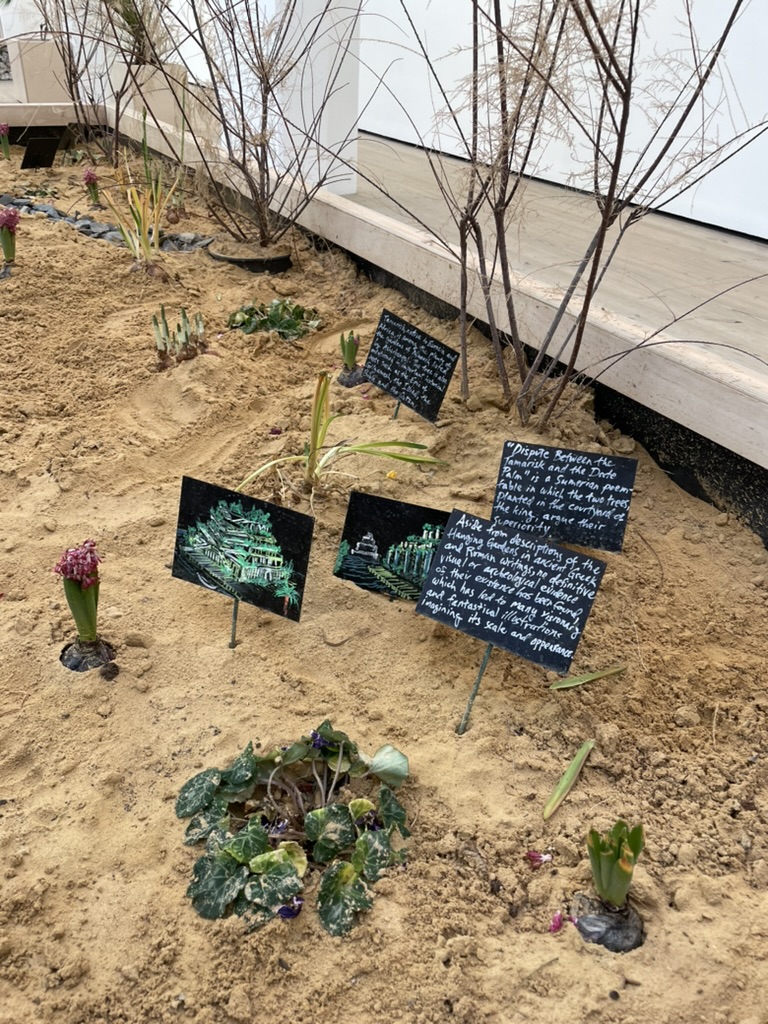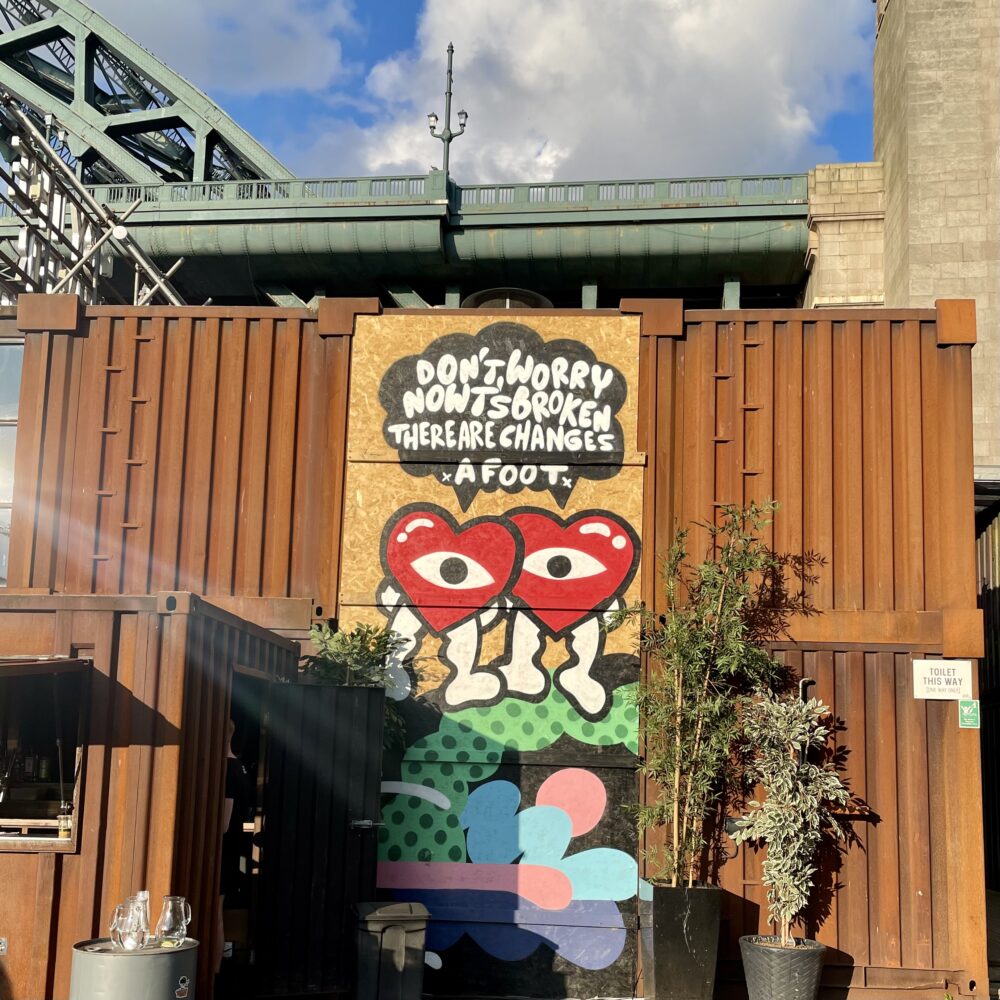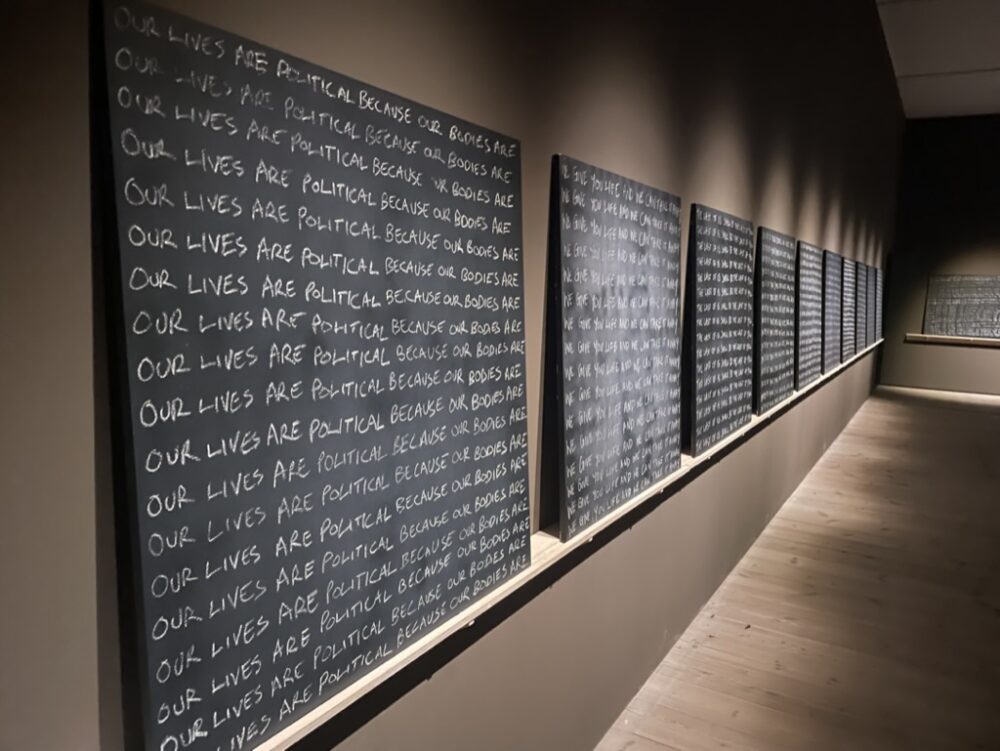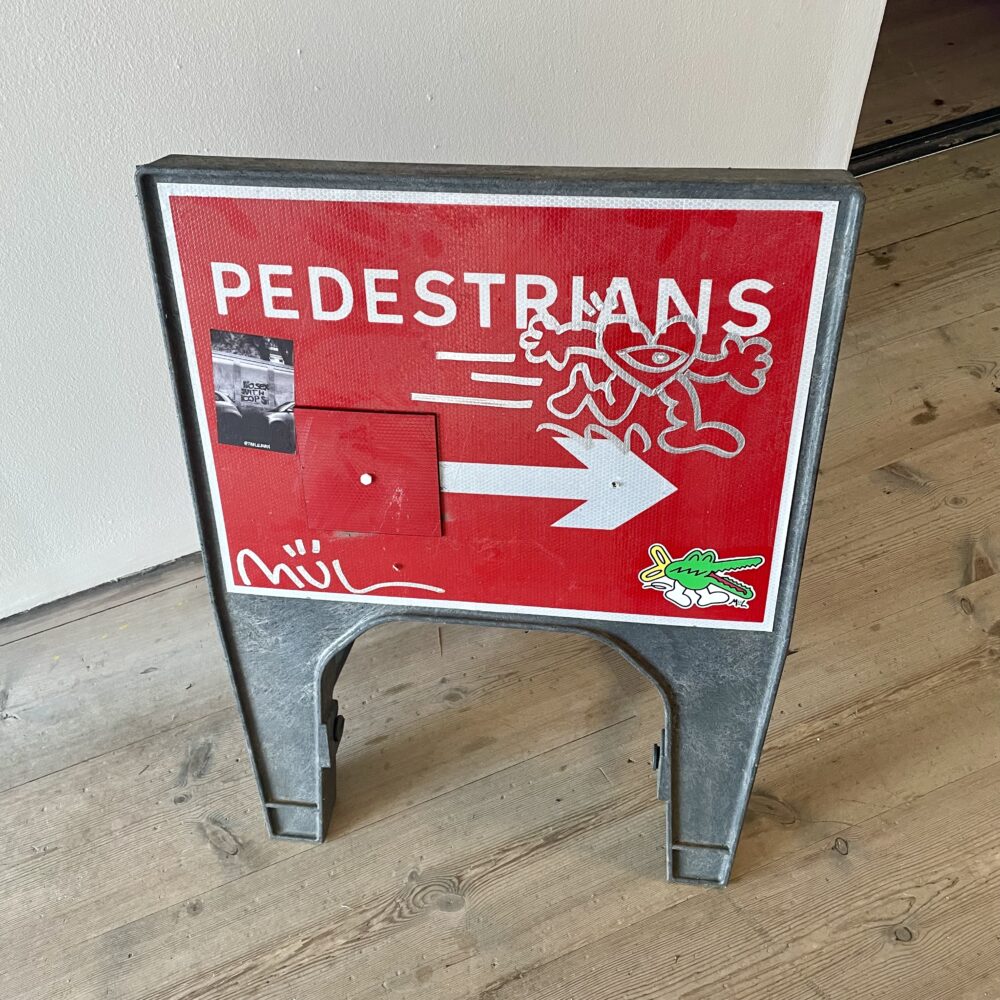317 words posted by Simon on 16 June 2023
This is a massive exhibition by the British-Ghanaian artist Larry Achiampong, including everything from a feature-length film (showing five times daily) to a collection of (I think) twelve computer games, even a shelf of books to sit and read. One could easily spend days in this exhibition and still not see all the work. My brief visit barely scratched the surface.
Achiampong’s work explores our sense of identity. The scope is broad, incorporating everything from the way our identities can entrench inequality through class or cultural displacement, through to digital constructs of identity.
The most immediately arresting bits of work in the exhibition are from Achiampong’s Relic Traveller series, which includes a series of life-size space suits throughout the gallery. The narrative behind these is that they represent African travellers collecting the relics of their colonial past, found in the West.
I was also taken with a video installation in this series, Reliquary 2, which reflects on Achiampong’s separation from his children during the covid lockdowns. It features edited drone footage of Brighton’s ruined pier, among other sites, with cartoon space people overlaid. The audio features Achiampong directly addressing his children.
The installation Detention, shown in the photograph above, also caught my eye. This is partly inspired by the opening titles of The Simpsons, and partly reflects the way that politicians and social media posters repeat certain key phrases endlessly.
Yet, from the whole exhibition, the thing that struck me most was the atmosphere. Achiampong’s work is personal, he features his family in several pieces, and his work invites visitors to sit on beanbags or benches to watch video installations, to play computer games, to sit on maps, to take books from a shelf and read them. Somehow, whether it’s the work or the curation, the impression is unusually inviting, oddly warm-hearted. I thoroughly enjoyed my visit.
Wayfinder continues at The Baltic until 29 October.
